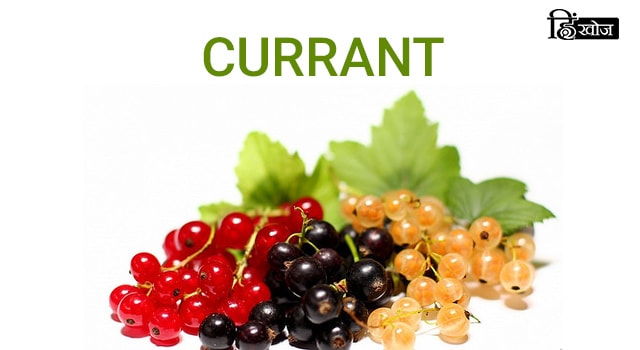The words current and currant form a set of homophones which means that they have the same pronunciation but different spellings and meanings.
In other words, it's just another ploy of English to play with your mind.
But, I'm here to help.
Let's deal with these two today.
But first, CLICK HERE to learn more about 'HOMOPHONES'
यहाँ दिए दोनों ही शब्दों का उच्चारण "करन्ट" है परन्तु इनकी spelling और अर्थ अलग हैं।
 A Small sweet, dried, seedless grape (किशमिश / रसभरी )
A 'currant' is a berry fruit that grows from a currant shrub. Example: black currant, red currant or white currant.
• He is fond of currant cakes.
• वह रसभरी केक का शौक़ीन है।
• This is my favorite recipe for currant jam.
• यह किशमिश जैम बनाने का मेरा पसंदीदा तरीक़ा है।
A Small sweet, dried, seedless grape (किशमिश / रसभरी )
A 'currant' is a berry fruit that grows from a currant shrub. Example: black currant, red currant or white currant.
• He is fond of currant cakes.
• वह रसभरी केक का शौक़ीन है।
• This is my favorite recipe for currant jam.
• यह किशमिश जैम बनाने का मेरा पसंदीदा तरीक़ा है।

AS AN ADJECTIVE
Happening now/ Of the present time (वर्तमान/ मौजूदा स्थिति या हालात ) • I don't want to talk about our current situation. • मैं हमारी मौजूदा स्थिति के बारे में बात नहीं करना चाहता। Something that is common/ general in use (आम/सामान्य) • A common current myth about Indians is that we don't do love marriages. • भारतीयों के बारे में एक आम वर्तमान मिथक यह है कि हम प्रेम विवाह नहीं करते हैं। AS A NOUN A steady flowing movement of water or air (जल/वायु प्रवाह) • The swimmer was swept away by the current. • तैराक जल-प्रवाह में बह गया था। The flow of electricity through a wire or circuit (विद्युत प्रवाह) • There was a powerful electric current running through the wires. • एक शक्तिशाली विद्युत प्रवाह तारों के माध्यम से चल रहा था। Trend, course or movement, a general tendency (Of events, opinions, etc…) (प्रचलित प्रवृत्ति) • Nothing disturbs the peaceful current of life in the village. • कुछ भी गांव के शांतिपूर्ण जीवन की प्रवृत्ति को भंग नहीं करता। Learn more about confusing homophones with the help of our other blogs: Loose vs. Lose Effluent Vs. Affluent Accept Vs. Except Vs. Expect Improve your vocabulary with our English learning apps HinKhoj and Namaste English.


